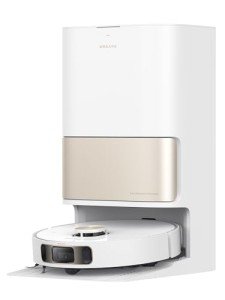The Rise of Robot Vacuum Cleaners in Industrial Settings
In the last few years, the landscape of industrial cleaning has actually experienced a substantial transformation with the introduction of robot vacuum. These automated gadgets are not just a novelty for homes; they have actually gotten traction in storage facilities, manufacturing plants, and other industrial environments. best robot vacuum deals out the functionality, benefits, and factors to consider of robot vacuum cleaners within the industrial context, while responding to some often asked concerns.
What are Robot Vacuum Cleaners?
Robot vacuum are automated cleaning devices equipped with advanced sensors and innovation that allow them to navigate around areas, spot dirt, and vacuum surfaces without direct human intervention. In industrial settings, they are developed to handle a variety of particles types, facilitate regular cleaning schedules, and enhance overall functional effectiveness.
Table 1: Key Features of Industrial Robot Vacuum Cleaners
| Function | Description |
|---|---|
| Navigation | Uses LiDAR or camera-based navigation for accurate mapping. |
| Size and Design | Compact and robust style to suit tight areas and withstand hard environments. |
| Self-Charging | Instantly go back to its docking station for recharging. |
| Dustbin Capacity | Bigger dustbin matched for industrial debris sizes and volumes. |
| Programs | Can be configured for scheduling and particular cleaning jobs. |
| Information Collecting | Geared up with sensors to collect information for maintenance and cleaning analysis. |
Benefits of Robot Vacuum Cleaners in Industrial Settings
The adoption of robot vacuum features a myriad of advantages:
Increased Efficiency:
- 24/7 Operation: Unlike human cleaners, robots can run all the time, adding to constant tidiness without downtime.
- Time-Saving: Automated cleaning allows employees to focus on core jobs instead of cleaning tasks.
Expense Savings:
- Labor Costs: Maintaining a robot vacuum can lower the need for a large cleaning staff, lowering total labor costs.
- Operational Efficiency: With improved cleanliness and decreased downtime due to maintenance concerns, companies can save money on operational expenses.
Enhanced Safety:
- Reduced Risk: By lessening the human involvement in dangerous cleaning environments, the risk of mishaps is reduced.
- Consistent Cleaning: Robot vacuums ensure that areas are consistently cleaned, lowering slip dangers and unhealthy environments.
Increased Flexibility:
- Customizable Cleaning Routes: These makers can be configured to clean particular locations or floorings, adjusting to changing industrial layouts.
- Range of Surfaces: Industrial robot vacuums can handle different floor covering types, from concrete to tiles, making them flexible.
Ecological Impact:
- Sustainable Cleaning Solutions: Many designs utilize very little water and eco-friendly cleaning services, aiding in business sustainability efforts.
Table 2: Industrial Applications of Robot Vacuum Cleaners
| Market | Application |
|---|---|
| Production | Cleaning production lines and assembly areas. |
| Warehousing | Keeping clean and orderly storage areas. |
| Food Processing | Ensuring cleanliness in sensitive areas to satisfy health standards. |
| Pharmaceuticals | Preserving ultra-clean environments for production. |
| Logistics and Distribution | Keeping paths clear for effective operation. |
Challenges and Considerations
While the benefits are significant, organizations need to likewise consider numerous obstacles:
- Initial Investment: The in advance expenses of purchasing industrial robot vacuum cleaners can be significant, though long-term savings might offset this expenditure.
- Upkeep and Repairs: Regular maintenance is vital to keep the robotic systems working optimally, and repair work can sustain additional expenses.
- Combination: Businesses may need to integrate these machines into existing workflows, which can need time and modification.
- Training and Support: Staff may need training to efficiently handle these devices, especially when troubleshooting or shows is needed.
FAQs About Robot Vacuum Cleaners in Industrial Settings
1. Just how much do industrial robot vacuum cleaners cost?
The cost can vary from a few thousand to tens of countless dollars, depending upon specs, features, and brand.
2. What kinds of surface areas can they clean up?
Robot vacuum cleaners are suitable for numerous surfaces including carpets, tiles, concrete, and even some wooden floorings.
3. How do they navigate intricate industrial environments?
Many industrial robot vacuums make use of advanced navigation systems like LiDAR, electronic cameras, and sensors to map out and adapt to their environments for effective cleaning.
4. Can they clean large locations without human intervention?
Yes, industrial robot vacuums are created to tidy substantial locations with predetermined paths and schedules, successfully operating autonomously.
5. Are these robots eco-friendly?
Many models prioritize efficiency and reduce water use, making them a more eco-friendly cleaning choice compared to standard approaches.
The intro of robot vacuum into industrial environments symbolizes an exceptional improvement in cleaning innovation. With their ability to improve efficiency, reduce labor expenses, and maintain security, these automated systems are paving the way for smarter and cleaner industrial operations. While difficulties may exist, the long-lasting advantages and technological improvements are encouraging for markets looking for to improve their cleaning protocols. As innovation continues to develop, we can anticipate additional innovations in robot vacuum that will change industrial cleaning practices much more.

